
The house from the air
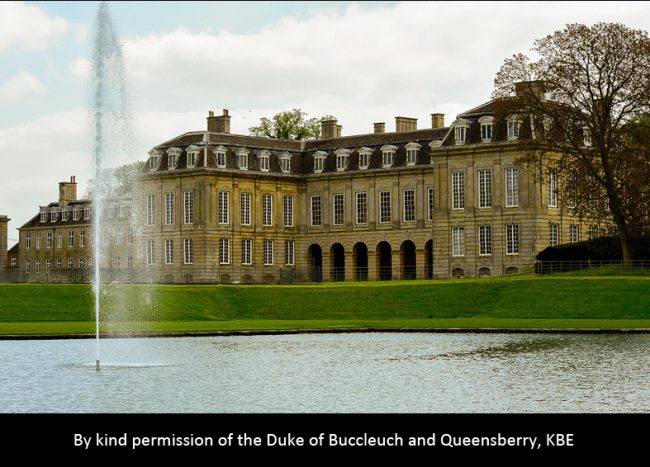
The Grand Etang

The entrance facade

The west facade

The entrance facade porch

One of the courtyards

The Great Hall with the arms of the 1st Duke of Montagu

Portrait of the Duke of Monmouth in the Great Hall

Overmantel in the library showing the family tree of the 2nd Duke of Montagu, circa 1720.

The drawing room
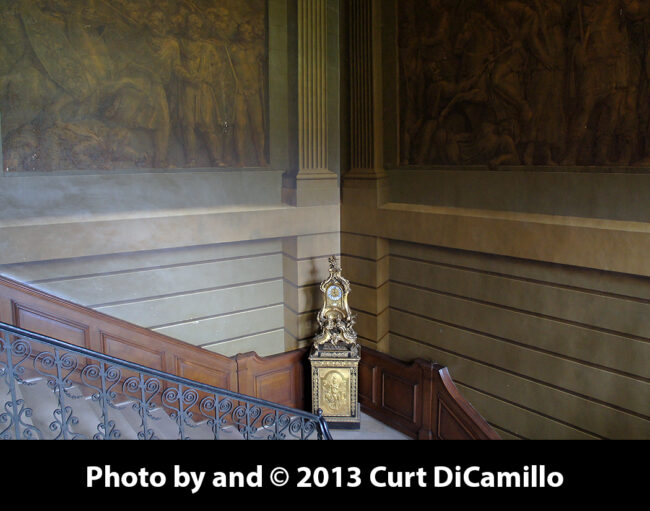
The staircase, with allegorical paintings by Louis Cheron.

The state bed

Circa 1700 oak veneered brass and tortoiseshell cabinet attributed to André-Charles Boulle

Pierre Gole writing table

Top of Pierre Gole writing table
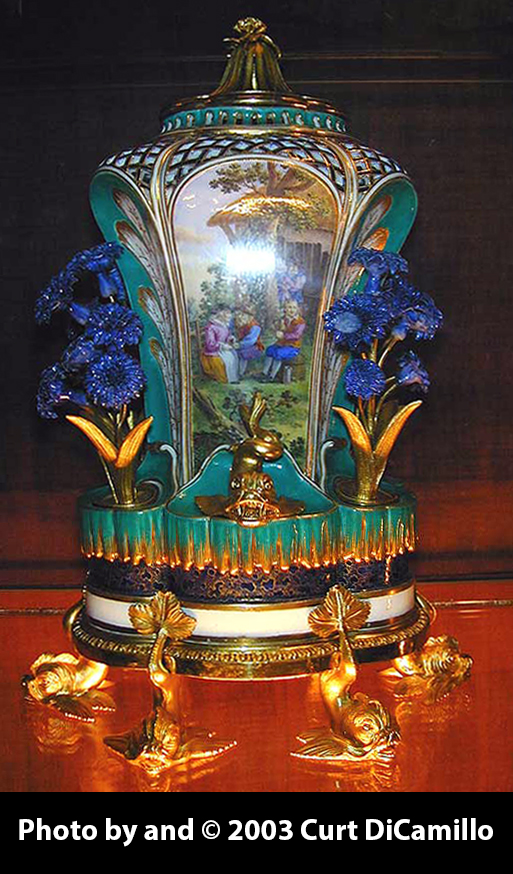
Sevres potpourri vase, one of the rarest pieces of Sevres ever made.

A 1773 Sevres plate made for Madame du Barry
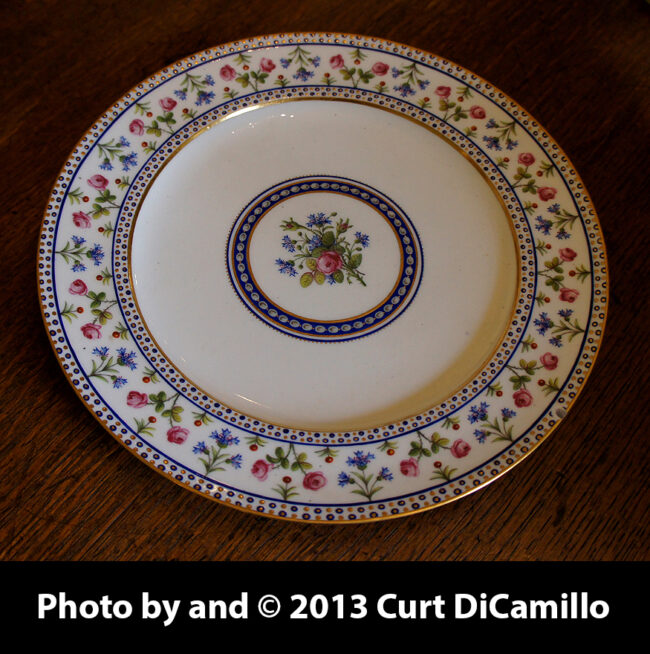
An 18th century Sevres plate in the Boughton collection
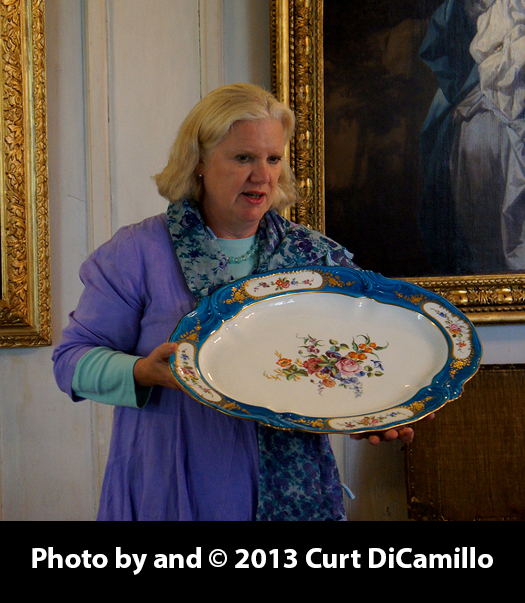
The late Dame Rosalind Savill giving a talk at Boughton on the house's Sevres collection

Detail of one of the the lusciously-preserved tapestries

One of the beautifully-preserved Boughton carpets
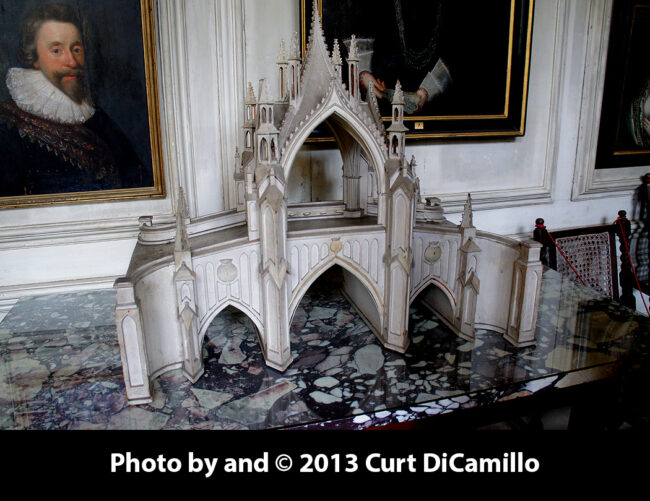
18th century model of the never-built Gothick bridge

Exterior of the Chinese Garden Pagoda
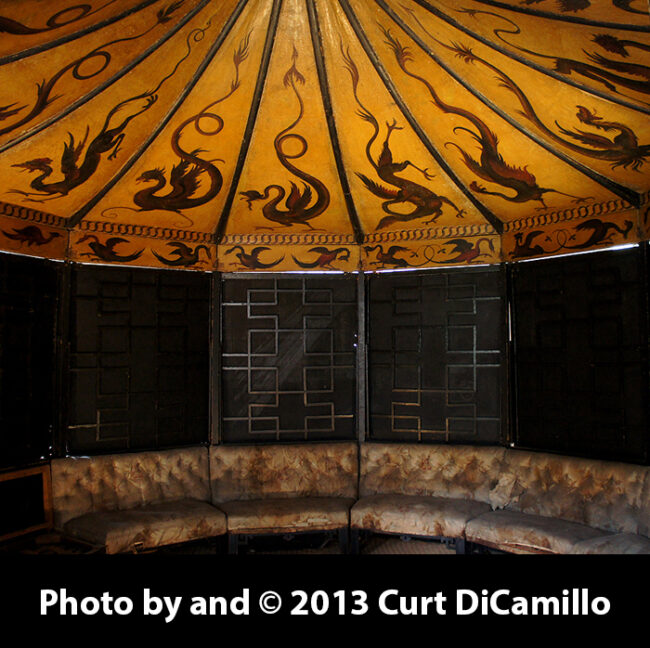
Interior of the Chinese Garden Pagoda

Extra bits and pieces

The stables
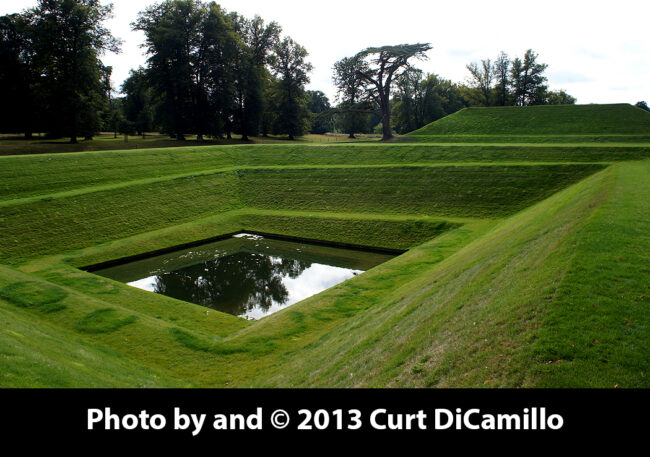
Orpheus
Earlier Houses: The land on which Boughton House sits belonged to the Abbey of Bury St. Edmunds during the Middle Ages. Sir Edward Montagu, lord chief justice to Henry VIII, acquired the estate in 1528, as part of the Dissolution of the Monasteries.
Built / Designed For: Rebuilt for Ralph Montagu, 1st Duke of Montagu
House & Family History: The original modest house that was created from the remnants of monastic buildings was slowly enlarged and built around seven courtyards until the palatial French style additions, starting in 1689, of Sir Edward's descendant, Ralph Montagu, 3rd Lord Montagu and 1st Duke of Montagu (created duke 1705). Boughton is a calendar house and features seven courtyards, 12 entrances, 52 chimneystacks, and 365 windows. Ralph Montagu married a wealthy widow, Lady Elizabeth Wriothesley (an heiress of the earls of Southampton), and was four times British ambassador to the Court of Louis XIV and a devoted Francophile. His additions left the house with the sobriquet "The English Versailles." Ralph was also master of the wardrobe to William III—the king honored him with a visit to Boughton, probably in 1689. When Ralph's son died without a male heir in 1749, Boughton passed through the female line, first to the Brudenells of Deene Park and then to the dukes of Buccleuch. The Buccleuchs, being Scottish, rarely visited Boughton, leaving it remarkably unaltered until the early 20th century. The walls of the staircase hall are covered with monochrome allegorical paintings by Louis Cheron; the artist's work also graces the Egyptian Hall (formerly the dining room), where a ceiling painting entitled "The Triumph of Bacchus" completes the room. The paneling of the Great Apartment is the work of Roger Davies, 1691-94. The 17th century state rooms are considered among the best preserved of any English country house. Boughton's exterior is similar in design to the west façade of Petworth House, Sussex, and is one of Britain's largest houses (its roof, of Collyweston stone, covers 1.25 acres) and is frequently cited as the best-preserved historic house in Britain still owned by its original family and open to the public.
Collections: Boughton is a treasure house, containing probably the finest collection in Britain of 18th century French furniture, with special emphasis on the work of Martin Carlin. An exotic circa 1672 crushed mother of pearl, ebony, pewter, and brass writing table by Pierre Gole is one of the stars of the furniture collection; it is one of a pair made for Louis XIV and was very likely given by the king to Ralph Montagu when he was the English ambassador to France. A pier glass, a walnut marquetry side table, and two torchères represent the work of Daniel Marot. Boughton also has a fine collection of English furniture, with the late 17th century work of Thomas Roberts and James Moore especially prominent. The collection of porcelain is exceptional, with Sèvres and Meissen particularly well represented. Much of the collection of French art and furniture at Boughton was formed in the 19th century by the 5th Duke and Duchess of Buccleuch, who were passionate about all things à la française. The Boughton Sèvres collection is one of the most important in Britain and features pieces once owned by Madame de Pompadour, Comte de Provence (later King Louis XVIII), and King Louis XV, including 103 pieces from Louis XV's Vincennes dinner service made for Versailles. Of particular note are a pair of exceptionally rare Sèvres potpourri vases featuring a fountain with dolphins cresting on top of green waves (see "Images" section). These vases were likely owned by Pompadour (they were listed as “deux pots pouris à dauphins” in the 1764 inventory of her porcelain at the Chateau of Saint-Ouen). The vases were purchased in 1830 by the 5th Duke and Duchess for £130 (the dealer who sold the vases to the Buccleuchs likely purchased them from Beau Brummell, whose collection was sold 1829-30). In the early 19th century George IV, also a lover of all things French, purchased the same model for the Royal Collection. The potpourri vases’ lower sections were designed to contain earth (or water) populated with bulbs that perfumed the air when the flowers bloomed. After the blooms died, the plants were removed and porcelain flowers were inserted to replace the bulbs. At the same time, the upper section, with its pierced porcelain holes, was filled with potpourri, which perfumed the room in place of the flowers. An outstanding pair of silver sconces bearing the royal cipher of Charles II, by whom they were given as a wedding gift to the Duke of Monmouth (Monmouth was the king's illegitimate son), decorate the Great Hall, whose ceiling was painted by Cheron in the 1690s (see "Images"). One of the glories of Boughton is the exceptional collection of wonderfully preserved tapestries; the collection includes a circa 1676 Mortlake series of the elements, the Mortlake "Playing Boys" series of circa 1640, and four Mortlake tapestries after Raphael cartoons (the Mortlake Tapestry Works, which operated from 1619 until 1704, was located in Mortlake, Surrey, today part of London). The Buccleuch Estates have such a large tapestry collection that a large number of pieces are on loan to British embassies the world over, are found in government offices in London, and even hang at Hampton Court Palace. Boughton contains three of the earliest English carpets in existence, made 1583-85 for the 1st Lord Montagu. In the 1730s some fittings and furniture from the second Montagu House in London were moved to Boughton House. One of the stars of Boughton is the great 17th century state bed (see "Images" section), donated to the Victoria and Albert Museum by the 8th Duke of Buccleuch in 1916. This monumental French, or possibly British, bed was at Boughton by 1697; it's conceivable that the bed was a royal object granted to Ralph Montagu from the Great Wardrobe, the department responsible for furnishing the royal residences. In 2003, after being absent from Boughton for over 85 years, the V&A returned the bed to the house on long-term loan. Over 6,000 hours of conservation work went into its restoration; the silk damask brocaded with gold thread and finials of ostrich and egret feathers were all gloriously restored. The addition of the state bed restores the late 17th century sense of progression through color and materials at Boughton—something that cannot be experienced anywhere else in England. On display in the house is an important model of the proposed Gothick bridge (see "Images") for the Boughton Estate (never built) by William Stukeley, a friend of the 2nd Duke of Montagu. The paintings collection includes El Greco's "Adoration of the Shepherds," Murillo's "St. John the Baptist," Annibale Caracci's "Head of a Youth," and Kneller's portrait of the Duke of Monmouth, who married Anne Scott, an ancestor of the Montagu-Douglas-Scott family (the family name of the dukes of Buccleuch). The collection also includes works by van Dyck, Cuyp, van de Velde, Beuckelaer, Gainsborough, Batoni, Frans Pourbus, Sebastien Bourdon, Solimena, Carlo Dolci, and flower pictures by Monnoyer. Further notable paintings include portraits by John de Critz of the 3rd Earl of Southampton (a friend of Shakespeare and a noted soldier), as well as a portrait of the earl's wife, the Countess of Southampton, in her dressing room, by an unknown artist. In 1599, during the Nine Years' War (1595-1603), Southampton went to Ireland with the Earl of Essex. During his time in the Irish wars it was reported to Cecil, the queen's virtual prime minister, that Southampton saw most of his active service in bed with a captain Piers Edmunds—he would "cole and hug" his captain in his arms, and "play wantonly" with him. However, Southampton was active during the campaign and prevented a defeat at the hands of the Irish rebels when his cavalry drove off an attack at Arklow in Co. Wicklow. He was deeply involved in Essex's conspiracy against the queen, and in February 1601, was sentenced to death. Cecil obtained the commutation of the penalty to imprisonment for life. Southampton served time in the Tower of London from February 1601 until April 1603 for his part in Essex's rebellion. Legend has it that the earl's cat, Trixie, made her way across London, walking from Southampton House to the Tower, searching for her master until she found the chimney to his cell, whereupon she climbed down to join him. A more likely story is that Trixie was smuggled into the cell by the earl's wife. Trixie kept her master company in his tower cell for approximately two years, until he was released at the accession of James I in 1603. The earl commissioned the now-famous portrait of himself by John de Critz that prominently features Trixie. The Boughton collection also contains two views of the unembanked Thames at Westminster by Samuel Scott, one of them showing the long-demolished Montagu House. There is also a collection of 40 van Dyck grisailles (oil sketches) in the drawing room that was once in the collection of the artist Sir Peter Lely. Boughton's collections of 17th and 18th century French and English furniture, tapestries, 16th century carpets, porcelain, and painted ceilings make it one of the most important treasure houses not just in Britain, but in the whole of Europe.
Garden & Outbuildings: The park was laid out in the Dutch style in the late 17th-early 18th centuries by the Dutch gardener Van der Meulen; early 18th century avenues from this time survive. Also extant is an 18th century gatehouse in the boundary wall in front of the house. The gardens feature herbaceous borders, a circular rose garden, and a rectangular pond. In the early 21st century the 10th Duke of Buccleuch commissioned Orpheus (see "Images" section), an inverted grass pyramid—the first new feature to be added to the Grade I-listed Boughton landscape since the 18th century. In 2015 the Grand Etang (see "Images"), a long-forgotten lake of 1690, was restored by the 10th Duke. The acre-long lake was re-dug, lined with reclaimed stone, and filled with 1.5 million gallons of water. At its height in the 18th century, the Grand Etang dominated the approach to the house and was famous for its fountain, which shot 58 feet into the air; all of this has been faithfully restored and was opened to the public in August of 2015. The duke, speaking of the restoration: "The reopening of the Grand Etang is a major milestone in the restoration of the immensely important landscape at Boughton. A decade of work has revealed long-lost waterways and lakes dating back over 300 years, but only now can we enjoy the full vision for a majestic setting for this great house. The arriving visitor is greeted with views and reflections that are simply stunning. A rather significant part of our national heritage has been revealed for future generations to come."
Architect: Kim Wilkie
Date: 2009Vitruvius Britannicus: C. III, pls. 73, 74, 1725. C. Ivth, pls. 36, 37, 1739.
John Bernard (J.B.) Burke, published under the title of A Visitation of the Seats and Arms of the Noblemen and Gentlemen of Great Britain and Ireland, among other titles: 2.S. Vol. II, p. 91, 1855.
John Preston (J.P.) Neale, published under the title of Views of the Seats of Noblemen and Gentlemen in England, Wales, Scotland, and Ireland, among other titles: 2.S. Vol. I, 1824.
Country Life: XXV, 162, 198, 1909. LXXI, 322 [Furniture], 1932. LXXII, 596, 626 plan, 649 [Furniture], 1932. LXXVII, 278 [Furniture], 1935. CXLVIII, 654, 624, 684, 1970. CXLIX, 420, 476, 1971. Oct 19, 2011
Title: Treasure Houses of Britain, The - SOFTBACK
Author: Jackson-Stops, Gervase (Editor)
Year Published: 1985
Reference: pg. 462
Publisher: Washington, DC: National Gallery of Art (New Haven: Yale University Press)
ISBN: 0300035530
Book Type: Softback
Title: Boughton House: The English Versailles
Author: Murdoch, Tessa (Editor)
Year Published: 1992
Reference: pg. 184
Publisher: London: Faber and Faber
ISBN: 0571163386
Book Type: Hardback
Title: Great Houses of London, The
Author: Pearce, David
Year Published: 1986
Reference: pg. 116
Publisher: New York: The Vendome Press
ISBN: 0865650632
Book Type: Hardback
Title: Blue Guide: Country Houses of England
Author: Tyack, Geoffrey; Brindle, Steven
Year Published: 1994
Reference: pgs. 377-380
Publisher: London: A&C Black (New York: W.W. Norton & Company)
ISBN: 0713637803
Book Type: Softback
Title: Country House in the 1980s, The
Author: Young, John
Year Published: 1981
Reference: pgs. 19, 23
Publisher: London: George Allen & Unwin
ISBN: 0047200227
Book Type: Hardback
Title: Country Life (magazine)
Author: NA
Year Published: NA
Reference: Feb 6, 2003, pgs. 56-59
Publisher: Bath: Future plc
ISBN: NA
Book Type: Magazine
House Listed: Grade I
Park Listed: Grade I
Current Seat / Home of: Richard Walter John Montagu-Douglas-Scott, 10th Duke of Buccleuch and 12th Duke of Queensberry
Past Seat / Home of: Sir Edward Montagu, 16th century; Ralph Montagu, 1st Duke of Montagu, 1st Earl of Montagu and 3rd Baron Montagu of Boughton, until 1709; John Montagu, 2nd Duke of Montagu, 1709-49. Brudenell family, 18th century. Walter Francis Montagu-Douglas-Scott, 5th Duke of Buccleuch and 7th Duke of Queensberry, until 1884; William Henry Walter Montagu-Douglas-Scott, 6th Duke of Buccleuch and 8th Duke of Queensberry, 1884-1914; John Charles Montagu-Douglas-Scott, 7th Duke of Buccleuch and 9th Duke of Queensberry, 1914-35; Walter John Montagu-Douglas-Scott, 8th Duke of Buccleuch and 10th Duke of Queensberry, 1935-73; Walter Francis John Montagu-Douglas-Scott, 9th Duke of Buccleuch and 11th Duke of Queensberry, 1973-2007.
Current Ownership Type: Individual / Family Trust
Primary Current Ownership Use: Private Home
House Open to Public: Yes
Phone: 01536-515-731
Fax: 01536-417-225
Email: [email protected]
Website: https://www.boughtonhouse.co.uk/
Awards: Boughton was the silver award winner of the first Historic House Awards, given by AA and NPI. Best Loo Award, 2003.
Historic Houses Member: Yes